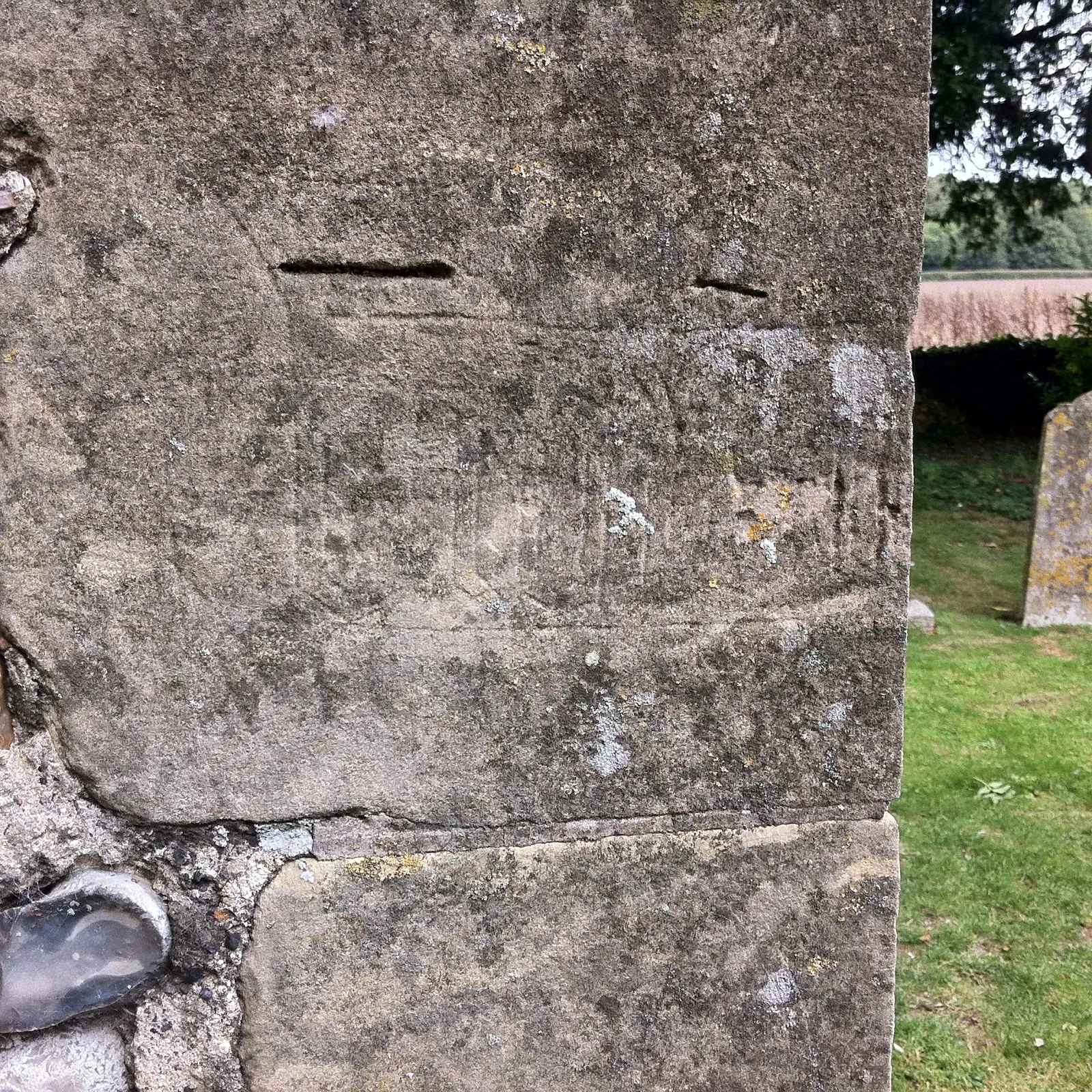Salle Church: Peeling Back The Onion
I was delighted to share a few of my more significant medieval graffiti finds with fellow travellers to the mighty Salle Church, in North Norfolk. Firstly, we gathered to look at an example of medieval writing inscribed into the external buttress of the chancel.
Although, not legible in the too generous light of an August afternoon, the letter forms are clearly fifteenth century. It is very unusual to find such an old graffito on the outside of a church. Although there may have been many such examples in the past, the effects of the weather mean that they tend to be eroded or replaced during renovations. Mr. Basil-Snapper (the third) was beside himself with joy at the sight of this. In the interest of academic rigour, I was careful to add that we have yet to definitively establish whether or not it was carved 'in situ' or not. However, that didn't stop him jumping gleefully from leg-to-leg, exclaiming,
"It's a big one - a belter Sir!"
"Well, come with me and we'll have a look at a seriously large 'tourist' graffito made in the mid-eighteenth century," said I. And so off we hobbled...
Among the assembled throng of antiquarians there were sharp intakes of breath at the sight of this splendid piece. Indeed, a couple of the more excitable types were overtaken by a swooning and were led to rest against conveniently placed gravestones as they recovered their faculties.
Young Pipkin Crumble - a member of our 'youth wing', the 'Ragged Greenhorns & Antiquarian Striplings' - began to read it slowly and deliberately...
"James A. Dun-nett & John Dun-net 1754"
"They stood here - on this actual spot!" exclaimed Mr. Basil-Snapper, before turning like a spinning top and toppling to the ground. Another swooning.
Once the Members had sufficiently re-oxygenated themselves, I was able to take them into the magnificent church, past the rood screen, before gathering them around a wooden bench-end in the chancel.
I began to explain how, during the early days of our survey work, although the pioneering work of Mr. Dart-Onion had already revealed graffiti archaeology on the reverse of wooden rood screens, we hadn't realised how much survives on the bench-ends.
"This very piece is the first time I noticed such work on a bench-end" I explained. "What we have here is most likely a carpenter's/mason's drawing board. They would have utilised flat surfaces such as this to sketch out their ideas. Using a thin skim of plaster they could use such boards repeatedly, re-skimming them to create a fresh surface. That explains the often jumbled collection of 'scribble' you see on these."
"It's everywhere!" cried out Mrs Truckington-Shay. Before I could say, "Huzzah to that!", off she scampered and in no time at all had discovered a piece that I have to confess I had missed, despite many previous visits to this site.
For there, etched into the pane of glass, was the following inscription:
"Rember poor Joseph that painted the church May 12th 1802".
"Well I never" I spluttered, "isn't that quite the thing my fellow Ramblers!"
The splendid endeavours of Mrs Truckington-Shay are a reminder that the more people who explore a site, the more chance there is that we shall reveal their mysteries. How wonderful it is to 'connect' with poor Joseph the painter after all these years.
~ Munro Tweeder-Harris Esq ~





Comments
Post a Comment